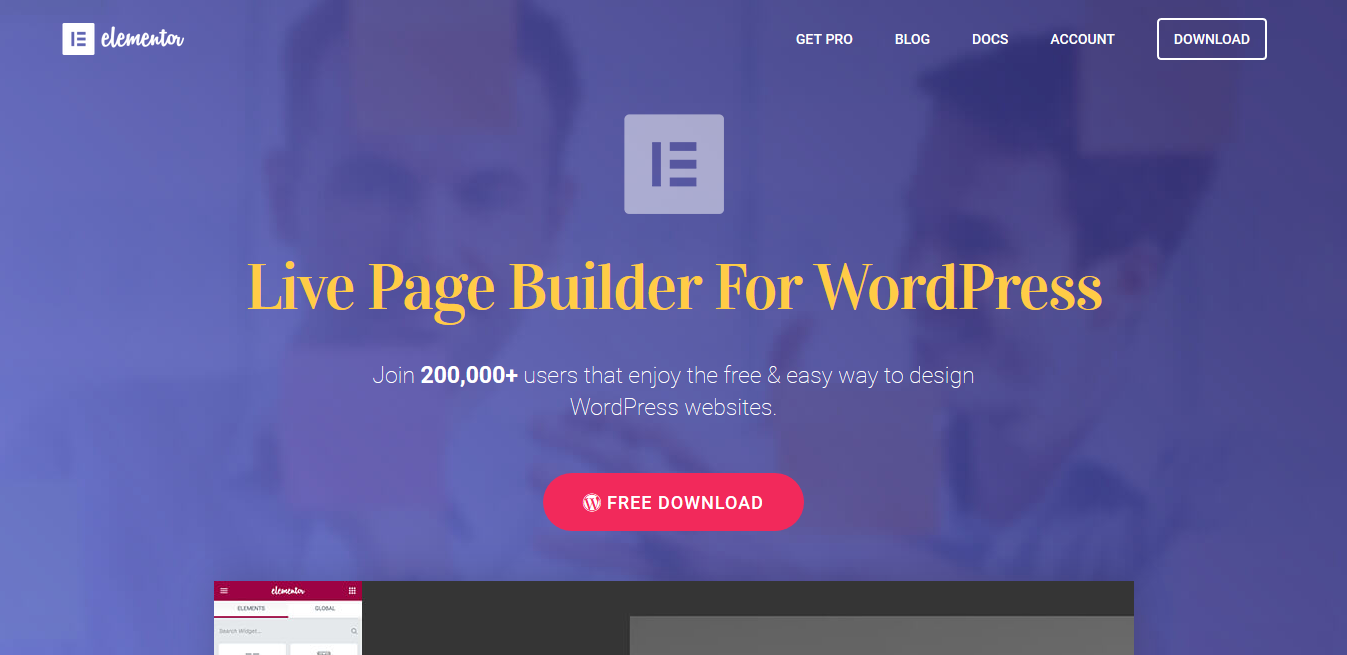Name: Yaniv Goldenberg
Age: 32
Role: Marketing Manager
Background: I’m a technical marketer focused on opportunities driven by user experience & data. I am responsible for creating, optimizing, and maintaining Elementor’s traffic & conversion system with the goals of customer acquisition and revenue.
What is your company called: Pojo.me – Elementor
Founded: June 2016
How many people are on the team right now? 15
Where are you based? Tel Aviv, Israel
Did you raise money?
Yes, initially after the bootstrap period, we raised around 500k from private investors to keep growing as fast as we can.
Can you tell us what Elementor is and how you make money?
Elementor is a front-end drag & drop page builder for WordPress, allowing to create & design beautiful websites visually.
Elementor is a free plugin, it’s a complete product with many great features (recently passed 200,000 active installs). Elementor Pro includes more comprehensive design & marketing features.
Although you can create stunning websites using the free version, many users demand more advanced features, consequently they choose upgrading to Elementor pro.

How did you get this idea?
When we began working on WordPress, we’ve seen recurring patterns. The customer were never truly satisfied, although our themes answered most of their needs. there was always one minor change they had to do, and they couldn’t do it by themselves, that’s when we understood the need and started working on Elementor, visual drag & drop page builder that works on any template and any theme.
How long did you work on it before you launched? When did you see your first dollar?
It took us one year to launch Elementor, and another 6 months to launch Elementor Pro (and earn our first dollar).
Who are your clients? What is your target market?
Most of our customers are web designers, freelancers and agencies, there are also many site owners & marketers. Those are the main segments that should benefit the most from Elementor.
Are you profitable? if not, when do you think you will get there?
Not yet, we never try to convince free users using a hard sell, we try to focus on solving a real pain for them & serve them better.
We are a fast growing company, at the moment we focus mostly on development & reaching new markets, our main goal is massive growth.
We think we’ll get there soon, Elementor already proved an invaluable tool for many professional designers. It takes the pain out of design issues on WordPress allowing our customers to create better websites in half the time.
That’s why we believe our customers growth rate will keep accelerating on a weekly basis.
Number of paying customers: More than 10,000 paying customers
Number free users: 200,000+ active installs
How did you get your first 100 customers?
Two weeks before the official launch of Elementor pro (during Black Friday), we ran a pre order email marketing campaign and got our first 100 paying customers in less than a day.
What are the 2-3 main distribution channels that work best for you? What channel didn’t work out for you?
Our main channel is WordPress Repo (WordPress plugin directory) other channels that work great for us are: SEO, AdWords & Facebook.
We’ve tried for a short period other programmatic vendors but it didn’t work well.
Growth is about deciding what you want to accomplish, understanding what’s blocking people and what truly motivates them, that’s why we hold more weight on intent-based targeting.
Our growth strategy is simple:
– Get good data (if it doesn’t exist)
– Create solid conversion funnels, break them down by sub-audiences
– Find a huge low hanging fruit (The biggest conversion drop)
– Attack it with a few innovative ideas.
Each channel serves different purpose, although scattering resources can be risky, we’ve seen how multi channel strategy produces higher ROI.
Tell us 2-3 growth challenges you encountered recently (and if you have a strategy how to solve them.)
We are always working on improving our product & messaging.
Everything can be a challenge, there are no silver bullets or one trick. You need to put in the work.
Don’t follow anyone’s “rules”.
Or at least, learn them, but then forget them. You’ll have to eventually do it your way.
We always have mindset of urgency, and never being complacent, constantly being on the move.
There’s no clear way to plot the path of a happy paying customer, no way to cleanly zero in on the aha moment they experience that flips the switch for them.
Personally I’m not satisfied with our pace of experimentation. We’re not testing nearly as many things as we should.
Attribution can also be tricky, since we respect our user’s privacy, we’re using all the other channels to fill in the blanks.
Supporting our free users can also be challenging. Since we are growing so fast it’s hard to keep up, but fortunately we have an amazing Facebook group (more than 6700 members already) we’ve received so much feedback & support from our community, and they are always happy to help other members in the group.
Creating high quality content is always a challenge but we’re doing our best to provide more in depth tutorials on our website & Youtube.
How we try to encounter most of those challenges – testing.
Our framework – having clear understanding of the hypothesis of the test, the metrics we need to monitor and ensuring that they’re completely trackable.
The more qualitative (and quantitative) research, you do before coming up with ideas, the higher your chances of finding a winning variation.
Some of the tasks are not worth to do in-house. What do you outsource?
Everything is scalable until it’s not, sometimes we outsource writing, mostly reaching out to other designers.
What are the 3 tools you and your team can’t live without?
I’m probably the biggest tool geek you’ll ever meet, but I think the tools don’t matter as much as the philosophy and framework.
Not going to surprise anybody – Slack, Google Analytics, Google Sheets.
Personally, My favorite tools are – Zest (content), SuperMetrics (Data/Analytics). IFTTT & Zappier (productivity).
Tell us the biggest mistake you had through building and promoting your product and what you’ve learned from it.
We have our core values, being customer driven is at the top. At first we assumed marketing should not be our main emphasis, we focused most resources on development & support. Now we understand that it doesn’t matter how great your product is, you won’t be able to achieve massive growth without exceptional marketing, and always being skeptical regarding data, since mistakes are going to happen along the way you want to be absolutely sure about something before investing resources. That’s why premature optimization or focusing on the wrong things at the wrong time is still a top killer for many startups.
If you had to start Elementor today, what would you do differently?
We always had customer-driven approach, but we should have done more.
Investing more on customer success & remarketing (bringing visitors back is key), eliminating channels that never saw traction and experimenting more at higher pace.
Where do you see Elementor in 5 years from now?
Offering a wide range of design & marketing solutions on WordPress.




